Rava Dosa
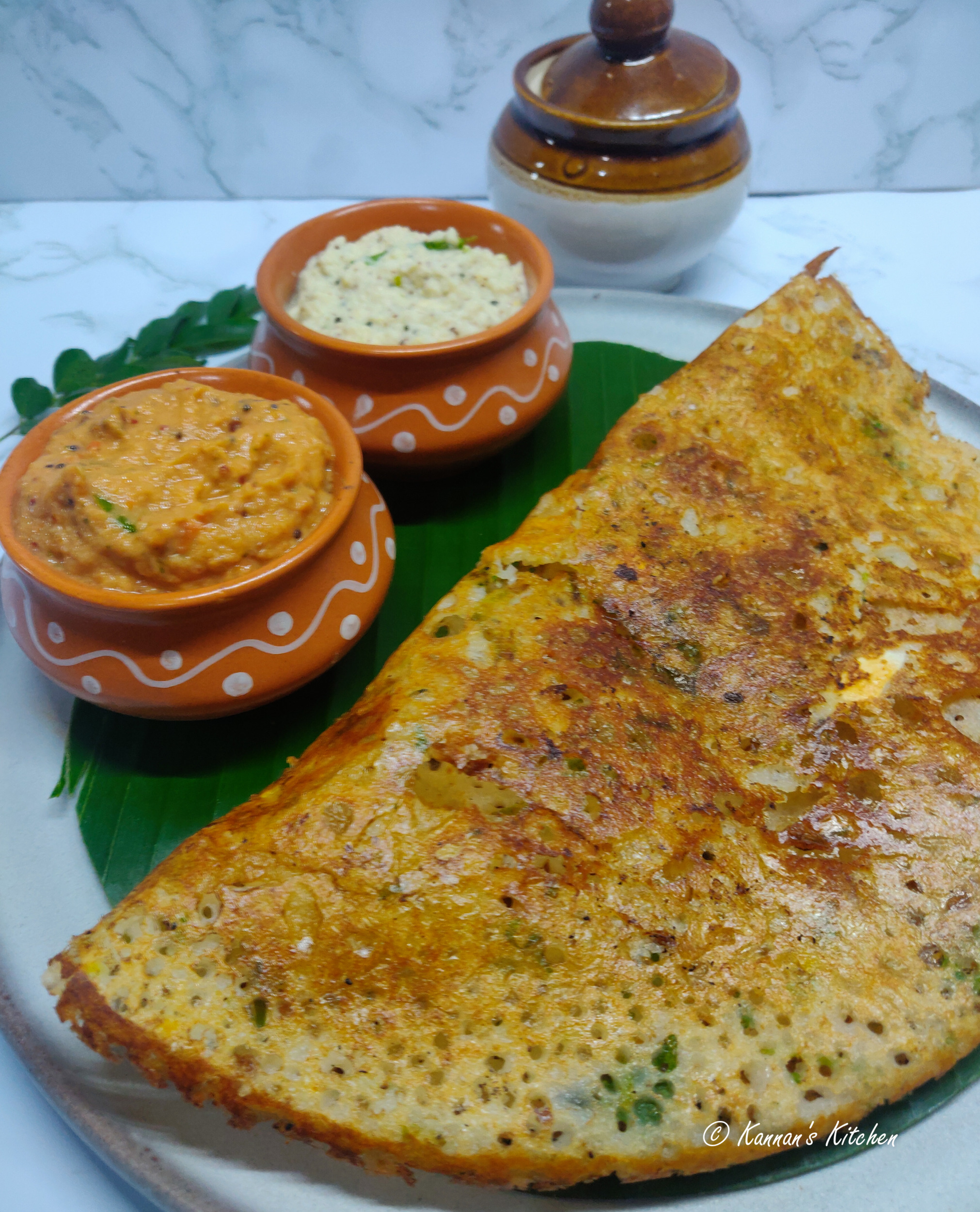
Dosa is extremely popular for breakfasts especially in South India. Though people normally associate dosas with the traditional rice batter based recipe which are crisp and delicious with a serving of chutney or sambar, but it is to be noted that there are numerous recipes of dosa where the main ingredient is not rice. One such scrumptious dosa is Rava Dosa.
The main ingredient in Rava dosa is semolina or sooji or rava. However rava is not the only ingredient in this recipe and it makes use of rice and plain flour too. Rava dosa when made right, tastes fabulous and also turns out super crisp. This dish is extremely popular in restaurants as they are pretty perfect, crisp and super think like a paper.
What I love about Rava dosa is that this is an instant dosa recipe and does not require any soaking of ingredients, grinding or even fermentation. Hence this makes it a perfect choice for breakfasts when we are usually in a hurry. Rava dosas can be had for evening snacks or dinner too and we generally make this at our home for light dinners.
However one of the issues that many face while making this dish at home is it turns out soggy or breaks while flipping and is not as great as the ones that you get in the restaurant. I am going to share some tips and tricks as part of the recipe which will give you restaurant style perfect Rava dosas.
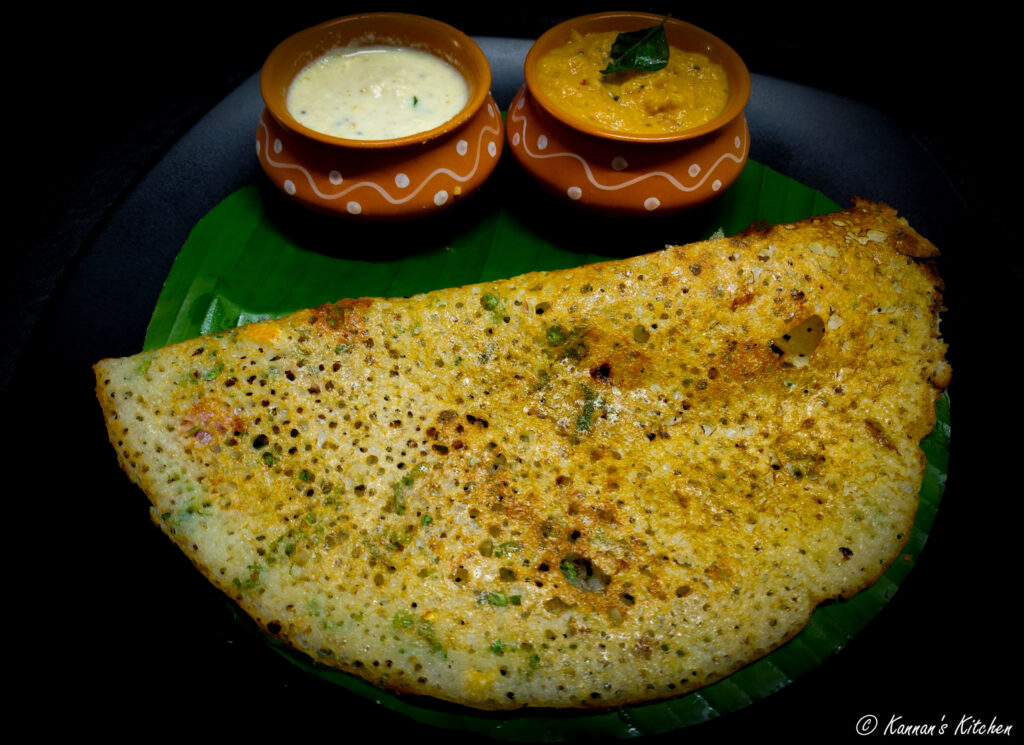
Tips to get crisp Rava Dosa
Ratio of Flour: The first and foremost tip is to use the right ratio of Rava: Rice Flour: Maida. Interestingly, though this dish is called Rava dosa, but it uses equal proportion of rice flour! Poor rice flour did not get it’s due credit for this dish unlike the normal dosas where rice is the hero 🙂 I follow the proportion of 1:1:0.5 for Rava: Rice Flour: Maida. If you are health conscious, you could substitute maida with whole wheat flour and works equally good.
Ratio of Water: The next important tip is the amount of water that is added to the batter. Do note that the batter for this dosa must be quite thin, just like buttermilk. So if you try to keep the batter thick, the dosas will turn out soggy and would not be crisp. However if it is too watery, then the dosas might break. Generally speaking, the amount of water required for this recipe would be around 5 times of the quantity of Rava used. So if you use around 1 cup of rava, you would require around 5 cups of water. However the amount of water could slightly vary depending on the type of rava used.
Do not spread: Rava dosa is also not spread on the dosa tawa in concentric way using a laddle (like we do for normal dosas), however it is simply poured from a height. This is what gives the beautiful holes in the Rava dosa which you normally find in the restaurants. It also yields crisp dosas this way.
Cast Iron Tawa: Couple of other tips are around the type of tawa to be used, the heat in which the dosas are to be cooked and lastly the amount of oil or to be used while cooking. Heavy cast iron tawas are always my first preference for making any type of dosa as it yields a wonderful texture and crispness to the dosa. A cast iron tawa is highly recommended for this recipe. You could use a non-stick tawa too, if you do not have a cast iron one, but it might not yield very crispy dosas.
Hot Tawa: The tawa must be really hot when the batter is poured over it.
Cook on medium flame: While the tawa must be hot while pouring the batter, but the heat must be then turned down to medium flame, so that the dosa is cooked through evenly and turns crisp.
Generous with oil or ghee: Lastly, be generous with the amount of oil or ghee for this dosa, as it does take some time to cook as compared to regular dosa. I am sure you would have seen how deliberately the chefs make use of oil for this dosa in the restaurants 🙂
Variations of Rava Dosa
Though Rava dosa tastes good as is, but there are various popular and delicious variations to the basic recipe. One such variation is Onion rava dosa and is my personal favourite. You could also cook the dosa in Ghee for making Ghee Rava dosa. Another variation is addition of potato masala filling to make Rava Masala dosa.
You could either cook this dosa on just one side or cook on both sides as per your liking. In the restaurants, the dosa is normally cooked on only one side.
Serving Suggestion
Rava dosa pairs well with a range of chutneys like coconut chutney, onion-tomato chutney, coriander chutney etc. You could also serve it with some sambar. Rava dosa with coconut chutney is my personal favourite.
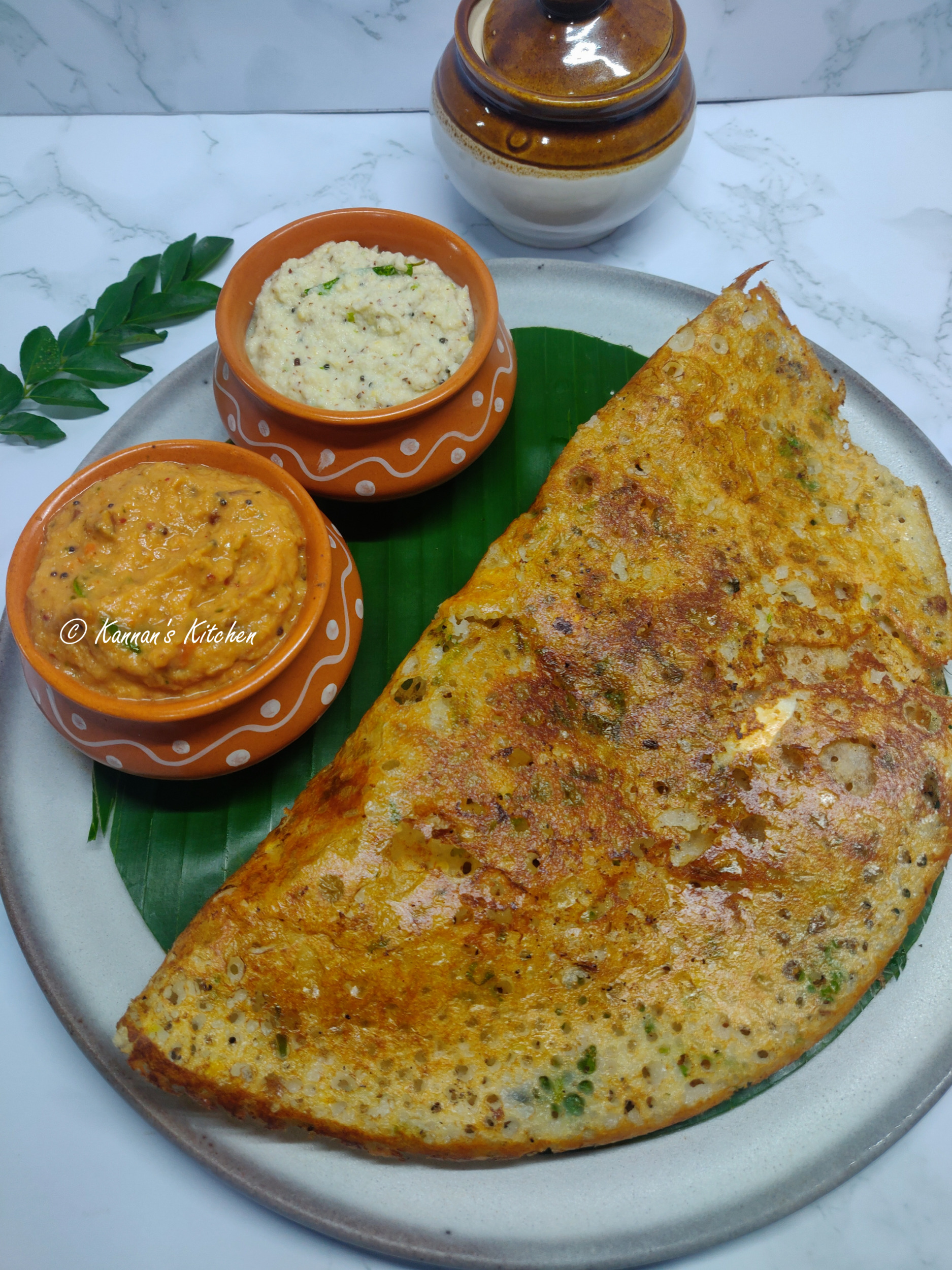
Rava Dosa | Onion Rava Dosa
Ingredients
- 1 cup Coarse Semolina or Sooji or Rava
- 1 cup Rice Flour
- ½ cup Plain Flour or Maida
- 2 Green Chillies finely chopped
- 1 inch Ginger finely chopped
- ½ tsp Peppercorns roughly crushed
- 2 sprigs Curry Leaves
- 2 tbsp Coriander Leaves finely chopped
- 5 Cashews broken in small pieces
- 1½ tsp Cumin seeds or Jeera
- ¼ tsp Asafoetida
- 2 tbsp Curd
- 2 medium Onions finely chopped (optional)
- 5 to 6 cups Water
- Salt to taste
- Oil for cooking
Instructions
- In a bowl, add semolina, rice flour, maida, salt, peppercorns, finely chopped green chillies, coriander leaves, curry leaves, asafoetida, curd, broken cashewnuts, cumin seeds and mix well.
- Add around 3 cups of water and mix well so that there are no lumps
- Let this batter rest for around 10-15 mins. The rice flour and semolina would have absorbed some of the water and become slightly thick. Mix well.
- Now add around 2 to 3 more cups of water and mix well. The consistency of the batter must be like that of buttermilk and free flowing. You might require less or more water depending on the type of the rava used. If you intend to make Rava onion dosa, you could either add the chopped onions to the batter at this stage or add them individually for each dosa. I prefer adding it individually for each dosa as it allows even distribution of onion for each dosa.
- Heat the cast iron tawa and spread some oil on it. Sprinkle little water over the tawa. Add some chopped onions to the tawa (optional).
- Mix the batter well each time before making dosa as the flour would settle at bottom. Take a cup or laddle full of batter and pour on tawa from height. Do not spread or fill the holes. Add around 2 teaspoon of oil and let it cook on medium flame till the edges become golden brown.
- Carefully flip the dosa and cook the other side for another minute or till it is done. Repeat making the remaining dosas. Make sure to mix the batter well for each dosa and and also sprinkle some water on the tawa before making the next dosa. Serve the dosas hot with chutney of your choice.
Notes
- Try to use a slightly coarse variety of rava for this recipe, as it yields crisp dosas. Do not use the semolina which is too fine, and at the same time do not use the very coarse ones like bansi rava or daliya.
- It is important to keep in mind the ratio of Rava: Rice Flour: Plain Flour as 1:1:0.5. The amount of water is roughly 5 times of that of Rava, however it be slightly less or more depending on the type of rava.
- The consistency of the batter must be thin like buttermilk. Add little more water if the batter becomes thick towards the end of making all dosas.
- Keep stirring the batter well before making each of the dosa as the flour tends to settle at the bottom.
- Use a cast iron tawa for making these dosas as it would yield crisp dosas.
- The tawa must be hot while pouring the batter, and subsequent to that it must be cooked on medium flame.
- Pour the batter from a height to get a lace or net type dosa. Do not try to spread the batter or fill the holes.
- Be generous with oil, as this dosa generally consumes slightly more oil for cooking when compared to the regular dosas.
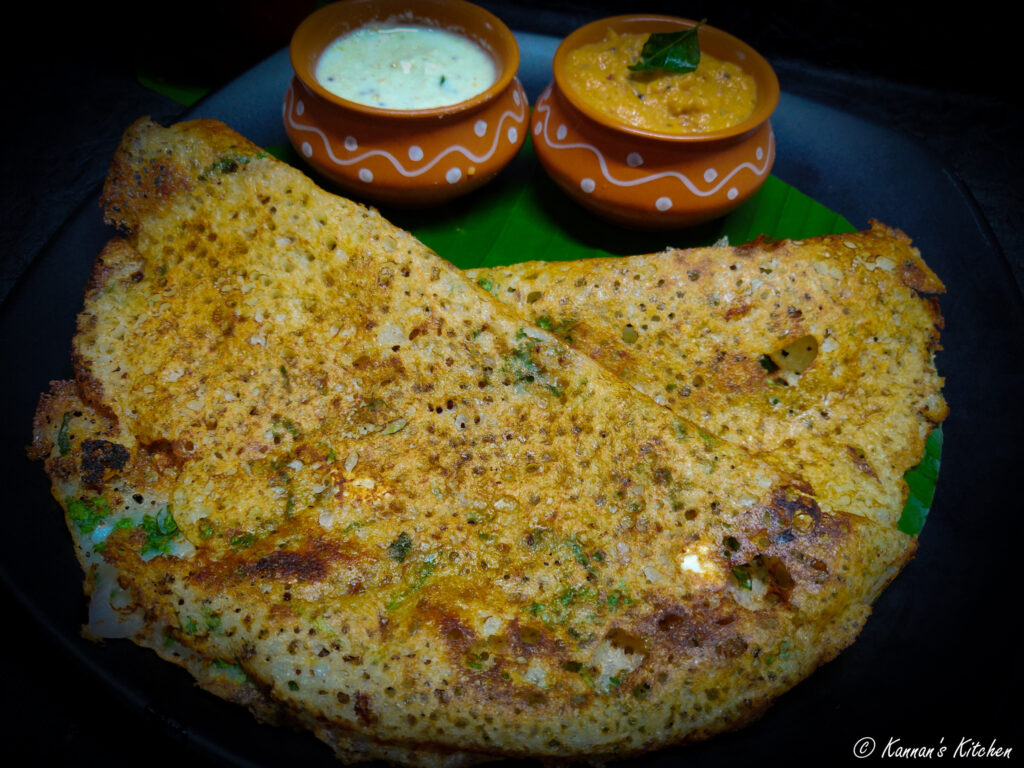

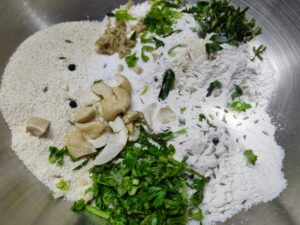
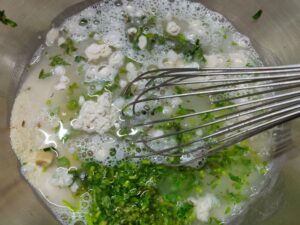

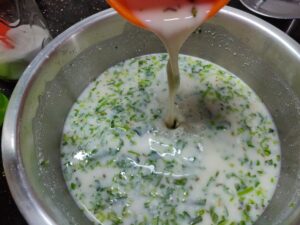
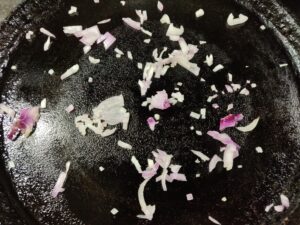
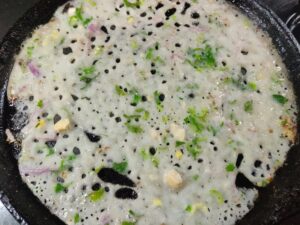
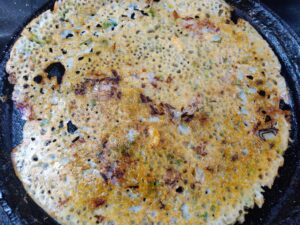
Very detailed way of explaining the recipe. The pics makes it easier for everyone to follow it easily. 👏🏻👏🏻
Thank you 🙂